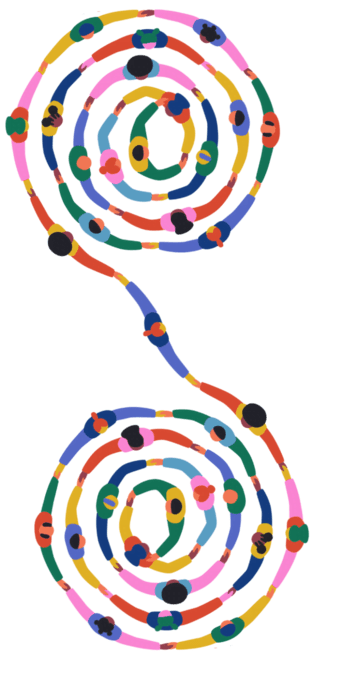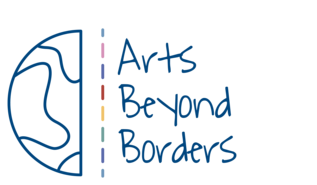Advice for Teachers
We are aware that addressing social justice issues with young people is complex. It can be daunting to step into this territory. We have created this section to provide teachers with rationales, strategies and professional development resources to help them feel more confident and prepared to set out on exciting journeys of discovery with their students.
Why engage young people in social justice issues that go beyond borders?

Because they affect young people’s lives
The Covid-19 pandemic has shown us how interconnected our world is. The spread of the disease has also revealed pervasive social inequalities. Young people are caught up in a world that is both socially connected and divided. Engaging our students in conversations around social injustices enables them to understand, challenge and transform the unequal power relationships present in their lives.
Because many young people want to get involved
Young people all over the world are turning out in great numbers to join movements and campaigns including School Strike for Climate, Make it Sixteen, and Black Lives Matter. They clearly want to make a difference in the world. Research about their experiences during Covid-19 lockdowns has also shown that this pandemic has awakened their hunger for social action. Let’s make the most of it!
Because of what we learn when we “go there”
Social justice issues are usually controversial, confront individuals and provoke strong emotional reactions. For these reasons, these issues are often ignored at schools– they’re too tricky to address! However, by guiding students creatively, educators can help young people develop the empathy, compassion, dialogic skills and social and cultural awareness necessary to navigate these issues in safe, democratic ways.
Because we can
The New Zealand Curriculum requires that students “engage critically with societal issues” (p. 30). Arts Beyond Borders has the support of organisations including the New Zealand National Commission of UNESCO and the Aotearoa Social Studies Educator’s Network (ASSEN).
Why through the arts?
Because embodied and emotional learning works
Social justice issues are complex. They touch on deeply held ideas and embedded attitudes. Didactic approaches often miss the mark. If you tell a young person what to think or do, you’re likely to get no response, at best, or resistance, at worst. Students have to care about these issues if they are going to engage meaningfully with uncomfortable questions. Arts-based pedagogies provide rich embodied experiences that directly connect students’ lives and imaginations to the issues being explored.
Because they are alternative forms of communication
How can we talk across the boundaries that define us? Drama, art, poetry, movement, sound, light, composition and texture allow us to see, feel, and be differently, and to share what we know. Through the arts, students can develop communication tools to express themselves, embody others, and engage with the world as global citizens.
Because they help us engage in critical dialogues
When we step outside of ourselves and into a fictional space, we can talk about uncomfortable issues more easily. In a fictional space, teachers can create ‘no-penalty zones’ for students, where everybody in the class can collaboratively test out and explore impulses and ideas without fear of “real-life” consequences.
Because they enhance social imagination
Imagination sits at the heart of hope and, therefore, a fairer world. People take social action because they can see possibilities. Through arts activities, teachers nurture the imaginations of young people, so they can reframe their life stories and envisage alternative futures for themselves and others.
Why and how do we deal with controversial social justice issues in the classrooms?
Remember: you can do it!
Some say we shouldn’t tackle social justice issues in the classroom because education should be neutral and avoid controversy. However, education is never neutral. Teachers constantly make decisions about what to teach and how to teach it. These are ultimately political decisions that reveal what knowledge and whose stories we consider valuable. The more inclusive we can make our teaching, the better equipped students will be to take a well-informed position. Also, wherever our students go in life, they will encounter controversy and injustice. Why not prepare them for this in the classroom? Arts Beyond Borders, the NZ Curriculum and many educational organisations, such as UNESCO and ASSEN, will support your efforts.
Be brave and vulnerable
Be honest about what you know and how you feel about the issue. Students don’t expect teachers to have all the answers about social justice issues, but they do expect teachers to care. Students appreciate when teachers openly show their human side and share where they stand on controversial topics (as long as they don’t feel, of course, pressure to follow). Mutual vulnerability makes conversations more genuine and encourages empathy and critical thinking both within and outside the classroom.
Create trust spaces
Students who feel comfortable to share their ideas, beliefs and experiences can have honest conservations around controversial issues. You can create a classroom environment in which no one in the class is judged or labelled for expressing their opinions and all students can safely challenge and be challenged by one another. This expectation of mutual respect also applies to teachers. We must be willing to be questioned by our students to keep the hard conversations going.
Give students the language they need
Social justice issues are complex and involve highly abstract ideas. Rather than simplifying the language you use with your students, unpack the tricky words and concepts to make them accessible. Build their vocabularies so they can think about these issues and share their beliefs and experiences in more sophisticated ways. Classroom discussions go better when we can employ precise language with commonly understood definitions and meanings.
Use different pedagogical strategies
How did you last deal with a controversial issue in your class? Did you have an open discussion or a debate? While these formats allow for the inclusion of a range of perspectives (impartial, committed, academic, devil’s advocate), they often present limitations. In some cases, only a few students participate actively, while others hang back. In other cases, only “popular” opinions emerge. Lessons that incorporate the arts, including drama, visual arts, film, and poetry, create more inclusive and layered ways to hold difficult conversations. The resources contained in Arts Beyond Borders can show you how.


Further resources for professional development
